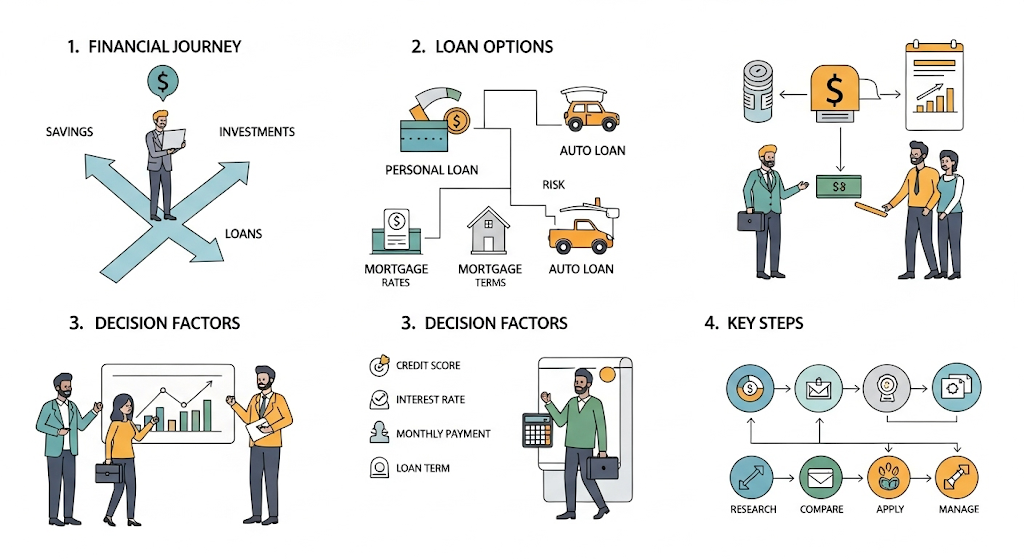
In the complex world of personal finance, not everyone fits into the traditional mold of employment. Many individuals—such as self-employed professionals, freelancers, and gig workers—struggle to secure traditional loans due to a lack of W-2s or pay stubs. For these borrowers, bank statement loans offer a flexible and viable alternative. This article explores the mechanics, benefits, drawbacks, and key considerations of bank statement loans, along with supporting statistics and insights.
What is a Bank Statement Loan?
A bank statement loan is a type of mortgage or personal loan that allows individuals to qualify using bank deposits instead of traditional income verification methods like tax returns, pay stubs, or W-2s. These loans are tailored for borrowers whose income is steady but unconventional or hard to document.
Key Users:
- Self-employed individuals (approx. 16 million in the U.S.)
- Freelancers and gig economy workers (over 70 million Americans as of 2023)
- Contractors and commission-based professionals
How Bank Statement Loans Work
Instead of using tax returns or employer statements, lenders assess the borrower’s income and financial stability through 12 to 24 months of bank statements.
Steps in the Process:
- Document Collection: Applicants submit business or personal bank statements.
- Income Analysis: Lenders average monthly deposits (usually 50-100%) to calculate income.
- Expense Review: Monthly expenses, withdrawals, and overdraft history are assessed.
- Loan Approval: A loan offer is made based on calculated income and financial health.
Why Choose a Bank Statement Loan?
1. Flexibility in Income Documentation
- Traditional loans require steady paychecks or W-2s.
- Bank statement loans recognize legitimate earnings through deposits.
“Around 30% of self-employed individuals reported difficulty obtaining a mortgage due to documentation issues.” — [CFPB, 2022]
2. Faster Approvals and Streamlined Process
- No need for employer verification
- Approval time is typically 30-50% faster than traditional loans
3. Realistic Representation of Income
- Reflects seasonal fluctuations
- Accepts multiple income sources (e.g., freelance gigs + business income)
Who Benefits Most from Bank Statement Loans?

Self-Employed Individuals
- Business owners, consultants, and service providers with variable incomes
- Often write off large expenses, reducing taxable income but not real income
Freelancers & Gig Workers
- Graphic designers, writers, Uber/Lyft drivers, delivery personnel, etc.
- Typically lack employer documentation but have regular deposits
Seasonal or Irregular Income Earners
- Sales professionals with quarterly commissions
- Seasonal workers in agriculture, hospitality, or retail
Foreign Income Earners
- U.S. residents earning money abroad with inconsistent documentation
Benefits of Bank Statement Loans
| Benefit | Description |
|---|---|
| Easier Qualification | No W-2s or tax returns required |
| Higher Approval Rates | Especially for those with high deposits but low reported taxable income |
| Flexible Terms | Custom loan structures based on actual cash flow |
| Quicker Access to Funds | Streamlined underwriting and less paperwork |
Application Process Overview
- Gather Bank Statements: Typically 12–24 months
- Research Lenders: Choose banks or non-bank lenders offering this product
- Submit Application: Include ID, business license (if applicable), and other supporting docs
- Underwriting Review: Financial behavior is assessed
- Loan Offer & Signing: Review rates, terms, and sign
Interest Rates and Down Payments

Interest Rates
- Typically 1% to 3% higher than conventional loans
- Range: 6.5% to 9.5% depending on credit score and LTV (loan-to-value)
Down Payment Requirements
- 10% to 20% is standard
- Higher LTV may require stronger credit or reserves
Credit Score Guidelines
- Minimum score: 620–640, but some lenders go lower with compensating factors
Potential Drawbacks
| Drawback | Explanation |
| Higher Interest Rates | Reflect added risk for lenders |
| Larger Down Payments | Upfront cash required may be burdensome |
| Limited Lender Options | Not all banks offer these loans |
| Stricter Review of Cash Flow | Inconsistent deposits may delay or prevent approval |
Tips to Improve Approval Chances
- Maintain steady monthly deposits
- Avoid overdrafts and large unexplained withdrawals
- Keep personal and business expenses separated
- Provide P&L statements if requested
Should You Consider a Bank Statement Loan?
Bank statement loans are a powerful option for borrowers with solid cash flow but unconventional income documentation. While they come with slightly higher costs, their accessibility makes them ideal for:
- Startup founders
- Digital nomads
- Contract workers
- Business owners in growth mode
Conclusion
Bank statement loans offer a much-needed alternative for millions of Americans whose income doesn’t come with a traditional paper trail. With thoughtful consideration, proper documentation, and lender comparison, these loans can bridge the gap between opportunity and access. As the gig economy and self-employment continue to grow, bank statement loans are likely to become an increasingly important part of the lending landscape.
Pro Tip: Before applying, compare multiple lenders, understand total costs, and review your bank statements for consistency and accuracy.
Sources:
- Consumer Financial Protection Bureau (CFPB)
- U.S. Bureau of Labor Statistics
- National Association of Realtors (NAR)




